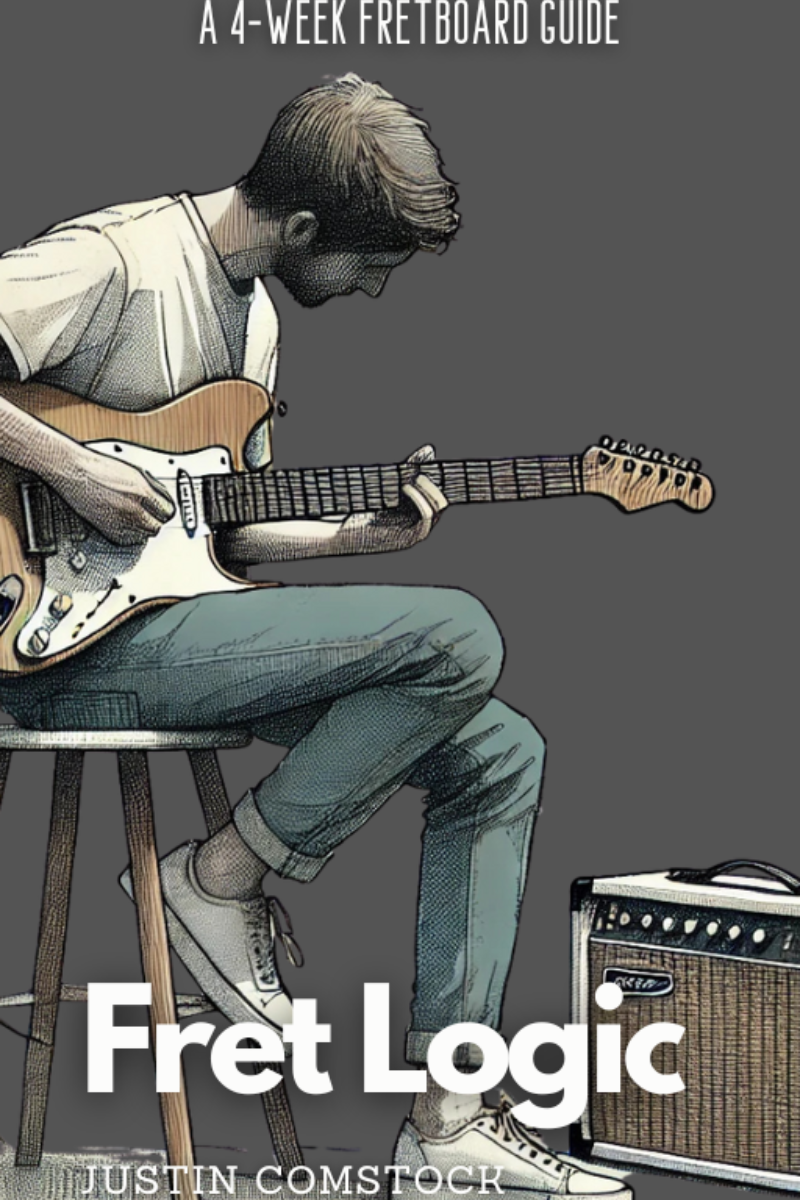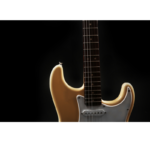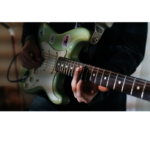If your rhythm playing feels clunky, stiff, or just plain boring—it’s probably not your strumming. It’s your chord progressions for guitar.
The ability to move smoothly through chord progressions for guitar is what separates campfire strummers from confident, groove-locked players. And the good news? You don’t need to know hundreds of chords to sound great. You need to know how to connect the right ones.
In this post, we’ll break down the most essential progressions, show you how to nail transitions, and give you practice prompts pulled straight from my book RhythmCraft and our private Discord community.
And if you want pro-level fretboard control, grab early access to FretDeck™ on Kickstarter — the only visual card system designed to master scales and transitions fast.
🎼 Why Chord Progressions Matter More Than You Think
Chord progressions are the framework of every song you’ve ever loved. From Beatles ballads to gritty blues to modern pop, the emotional arc of the music is powered by a well-built progression.
If you’re learning how to write songs, improvise, or just play cleaner rhythm guitar, understanding these progressions is mission critical.

❌ Stop Guessing. Start Shredding.
If you’re still fumbling through scale patterns and box shapes… it’s costing you progress.
FretDeck™ is the no-fluff system that shows you exactly how to master the fretboard—fast. Early access.
⚡️ This isn’t for dabblers. It’s for players who want results.
👉 Click here to join the pre-launch now
Early access. Limited rewards. Don’t wait.
🔑 3 Must-Know Chord Progressions for Guitar
✅ 1. I – V – vi – IV
Used in: Pop, Rock, Indie
Example in C Major: C – G – Am – F
Heard in: “With or Without You” – U2, “Let It Be” – The Beatles
Why It Works: Emotionally powerful and incredibly singable. Start here.
✅ 2. I – IV – V
Used in: Blues, Country, Rock ‘n’ Roll
Example in G Major: G – C – D
Heard in: “Johnny B. Goode” – Chuck Berry
Why It Works: Builds tension and resolves smoothly. Your blues foundation.
✅ 3. ii – V – I
Used in: Jazz, Soul
Example in C Major: Dm – G – C
Heard in: “Autumn Leaves” – jazz standard
Why It Works: Adds sophistication and voice-leading motion. Perfect for chord melody players.
🎁 Pro Resource:
Want to practice smarter? Download the Practice Playbook, a free eBook packed with 20 prompts, 10 methods, and proven routines to take your rhythm chops to the next level.
🔁 How to Master Chord Transitions (From RhythmCraft)
Knowing chord shapes is one thing. Moving between them musically is the real game. Here are four powerful techniques from RhythmCraft to level up your transitions:
🎯 1. Visualize the Next Chord Before You Move
Why It Works:
You prep your fingers before the beat hits, which smooths transitions and reduces dead space.
Practice Prompt:
Slowly loop a progression like G – C – D. Before each switch, mentally see the next chord.
🎯 2. Use Anchor Fingers
Why It Works:
One finger stays planted, acting as a “hinge” to guide the rest.
Example:
Going from C to G? Let your ring finger stay anchored on the 3rd fret of the B string.
Practice Prompt:
Work with progressions like C – G or D – A and keep that anchor locked in.
🎯 3. Train with a Metronome
Why It Works:
Builds time feel, clean transitions, and performance-ready rhythm.
Practice Prompt:
Set your metronome to 60 BPM. Loop I – IV – V in different keys and ensure each chord hits the beat.
🎯 4. Isolate the Hard Stuff
Why It Works:
Some transitions (like E to Bm or F to Dm) are always trickier. Isolate, drill, conquer.
Practice Prompt:
Take your weakest transition. Slow it way down. Nail it 10x before adding it to a full progression.
🥁 Rhythm Guitar Hacks From RhythmCraft
RhythmCraft is your roadmap to smoother transitions, dynamic strumming, and rock-solid groove.
🔊 Groove > Speed
Groove is what makes people move. It’s not about how fast you play—it’s how tight you sound.
🔀 Strumming Patterns That Lock In
Experiment with different rhythms and syncopation to make even simple chords sound dynamic.
Practice Prompt:
Take G – C – D and try:
- Basic: down-down-up-up-down-up
- Syncopated: down – down-up – rest – up-down
Play it against a drum loop or backing track to lock your time.
👥 Practice With Us in Guitar Freaks Hangout
You don’t have to learn in a vacuum.
Join the Guitar Freaks Hangout Discord to:
- Get weekly practice prompts from RhythmCraft
- Share clips and get feedback from other players
- Participate in group rhythm challenges
- Attend live sessions with real-time critiques
👉 Join the Guitar Freaks Discord and start leveling up with community power.

Join Guitar Freaks Hangout on Discord! 🎸
Get Fret Logic FREE!
Join the Guitar Freaks Hangout Discord and get exclusive access to my entire e-book, Fret Logic! Master the fretboard and elevate your solos with this comprehensive guide.
👉 Don’t miss out—join now and download your free copy!
🚀 Back FretDeck™ on Kickstarter and Master Transitions with Scale + Chord Clarity
Want to go deeper? Combine your chord progressions with scale knowledge and unlock soloing options on the fly.
FretDeck: Pentatonic Guitar Scales teaches you:
- All 60 pentatonic scale shapes in every key
- Interval training exercises
- Creative solo prompts
- Chord-scale connection drills
🧠 Back it now on Kickstarter and get early bird bonuses:
✅ Printable PDFs
✅ Bonus soloing guide
✅ Discord access with private channels
👉 Get FretDeck on Kickstarter now →

❌ Stop Guessing. Start Shredding.
If you’re still fumbling through scale patterns and box shapes… it’s costing you progress.
FretDeck™ is the no-fluff system that shows you exactly how to master the fretboard—fast. Early access.
⚡️ This isn’t for dabblers. It’s for players who want results.
👉 Click here to join the pre-launch now
Early access. Limited rewards. Don’t wait.
🎯 Final Takeaways: How to Practice Chord Progressions for Guitar
✅ Learn 3 foundational progressions:
- I–V–vi–IV (pop)
- I–IV–V (blues)
- ii–V–I (jazz)
✅ Master transitions using:
- Visualization
- Anchor fingers
- Metronome practice
- Isolating the tricky parts
✅ Add strumming dynamics and groove
✅ Track your progress in a journal or join our Discord
✅ Grab FretDeck™ to bridge chords and scales
Stop hacking through transitions. Start playing with clarity, feel, and confidence.
Back the Kickstarter, join the Discord, and let’s make rhythm playing fun again.
Want to connect your chord progressions to soloing? Learn how to break out of the box with the minor pentatonic scale here.
If you’re new to music theory and want a deeper look at how chord progressions are built, this guide from MusicTheory.net offers a great breakdown of diatonic harmony.










